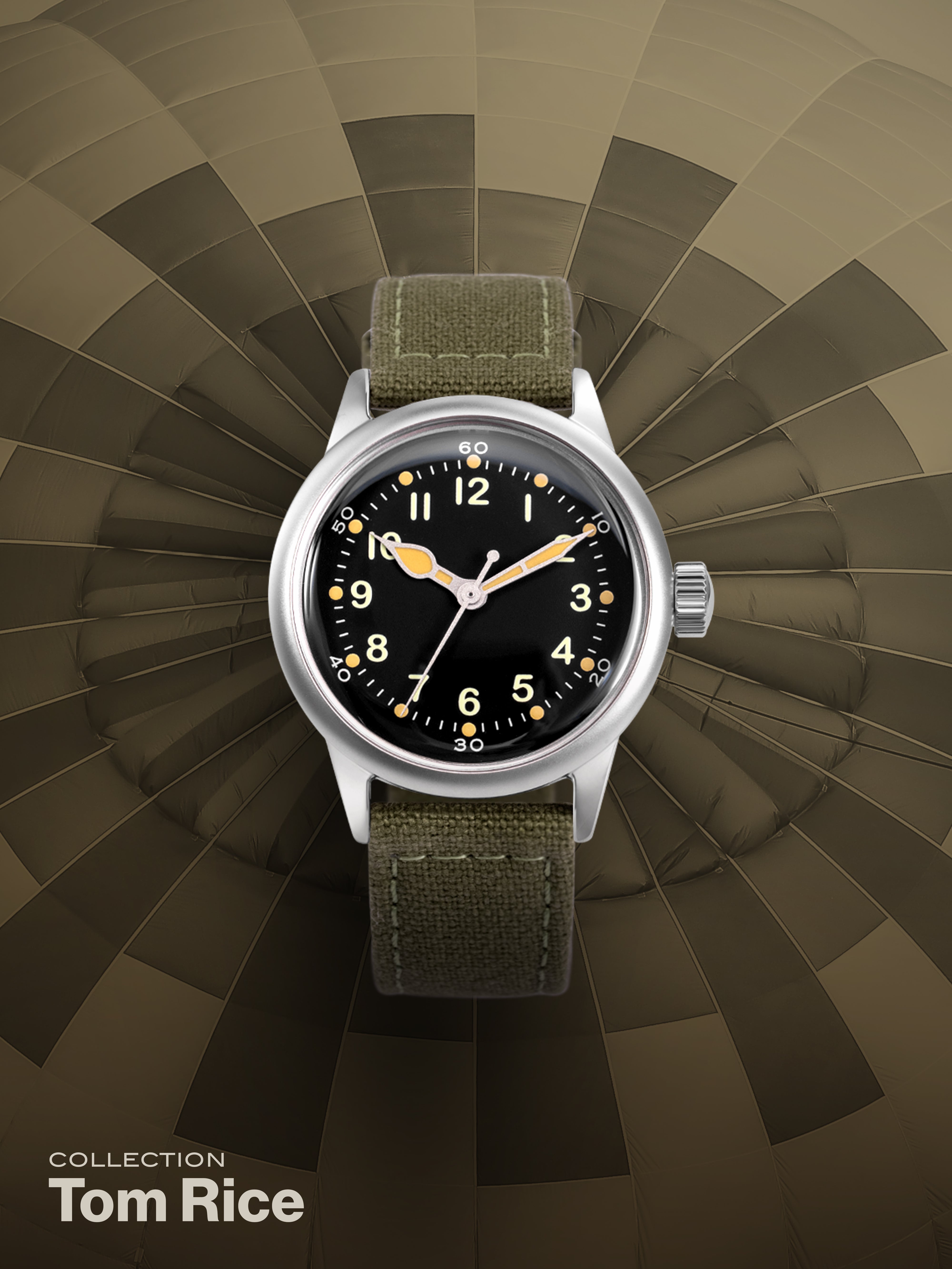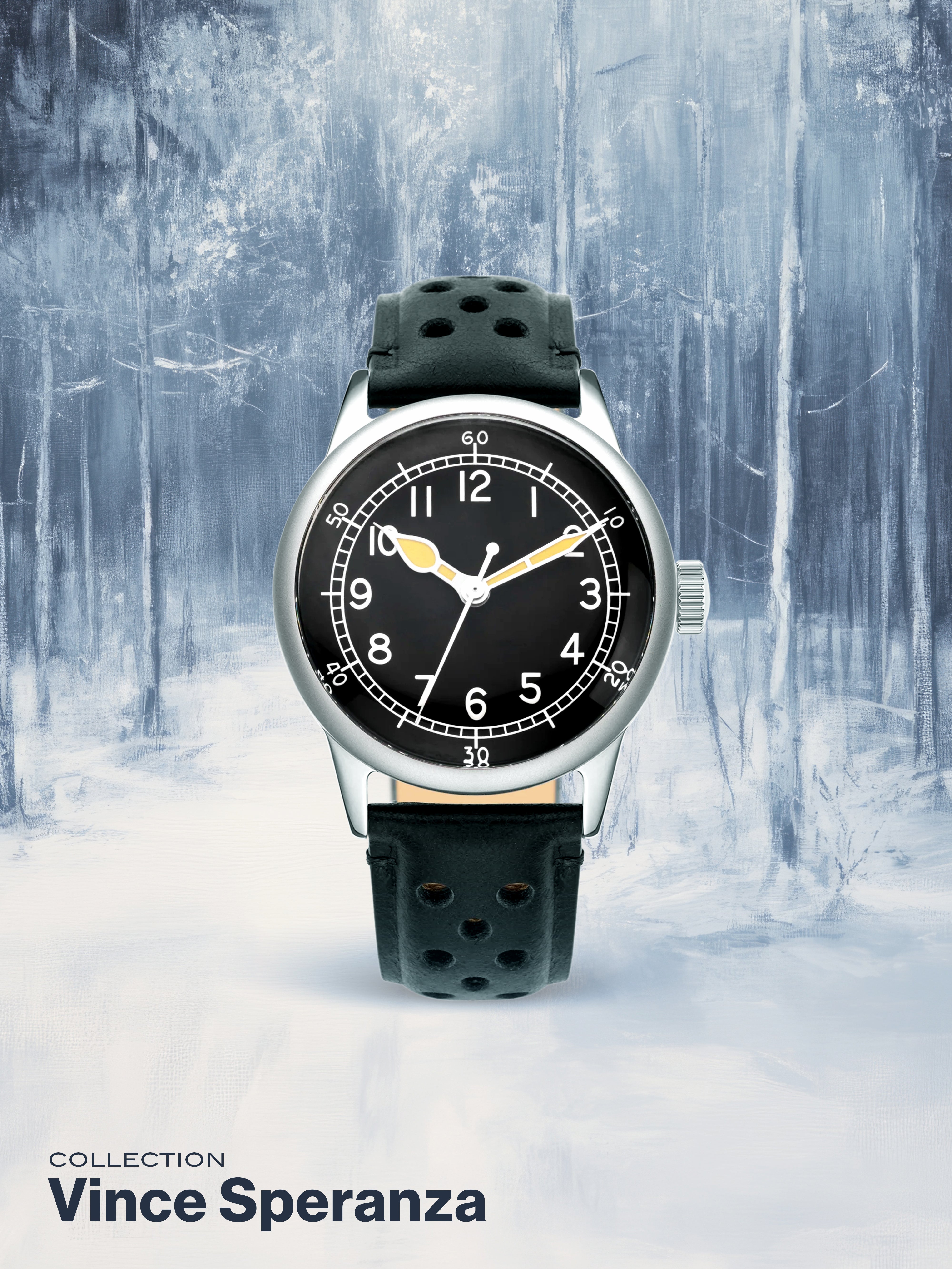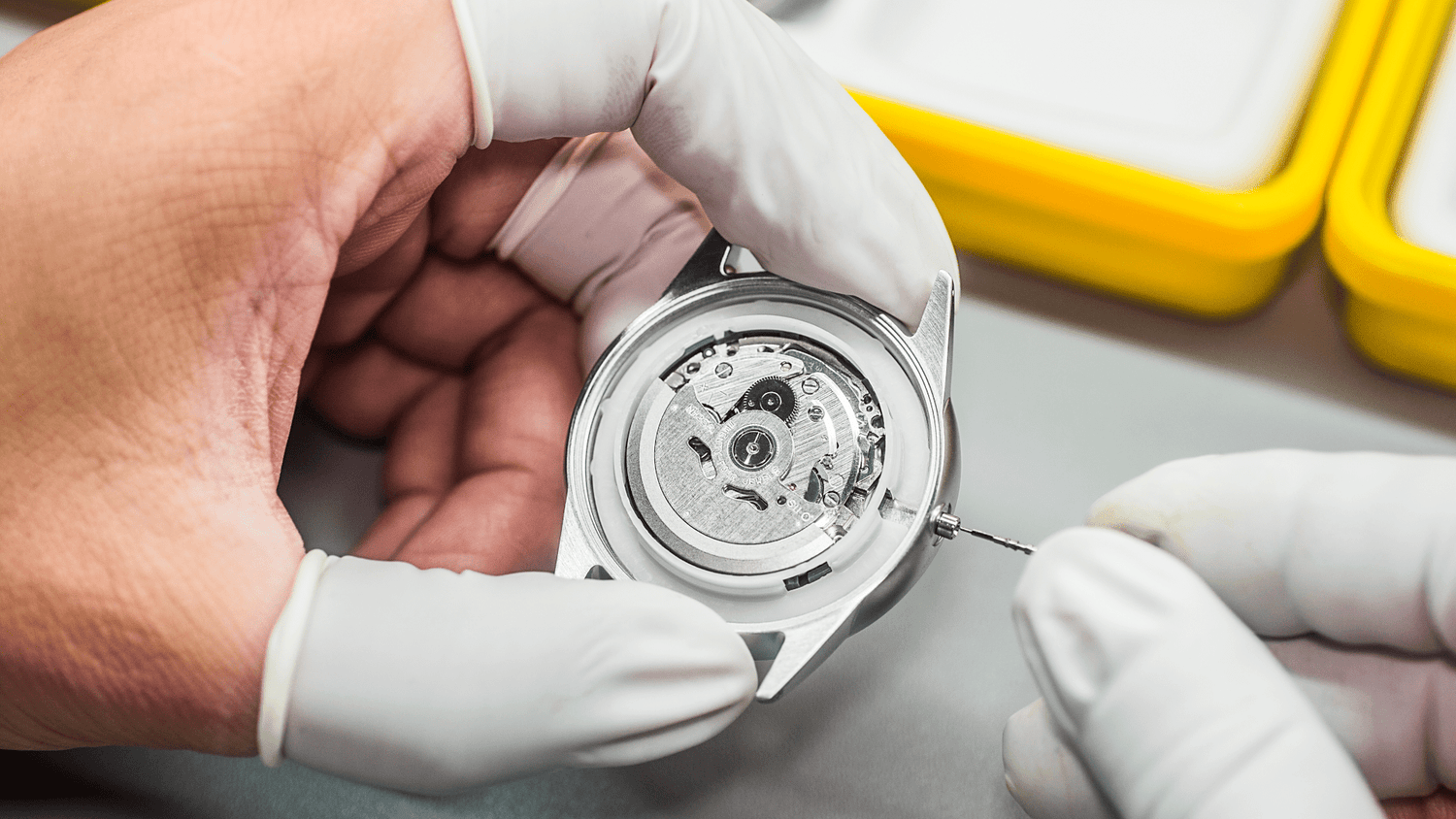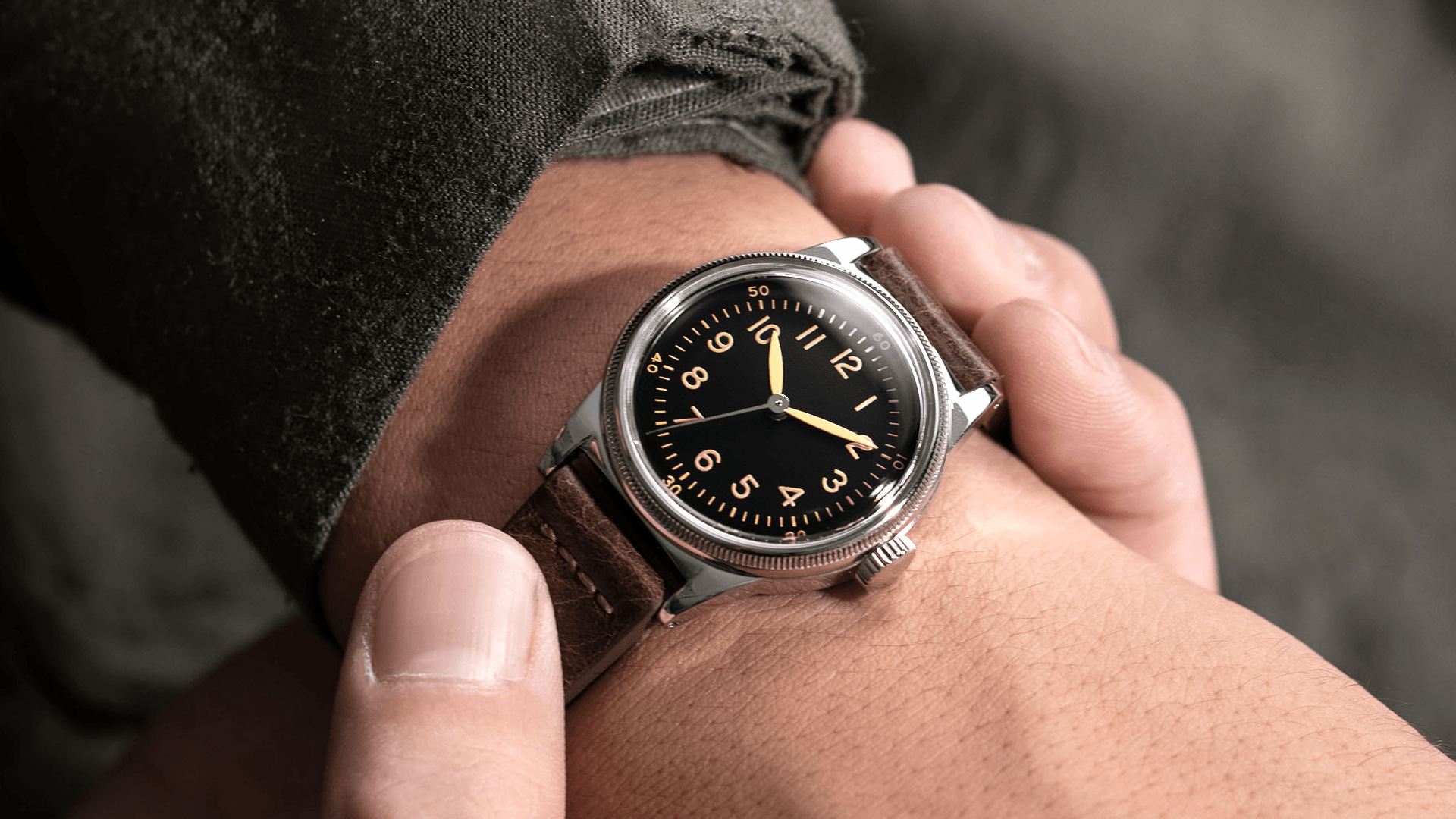Whether you prefer a mechanically-powered watch that winds itself with every motion of your wrist or the grab-and-go convenience of a battery-powered, quartz-regulated watch, Praesidus has something in its lineup for you. While there is often a temptation to compare these vastly different movement styles to discern ultimately which one is “better”, the truth is that both automatic watches and quartz watches have their own times to shine.
The original Praesidus A-11 was powered by a hand-wound mechanical movement. The natural successor to that movement type, therefore, is the mechanical automatic watch, which employs the same principles, but is wound by the motion of its wearer’s wrist.
Most modern automatic watches have a power reserve of at least 38 hours. The power reserve indicates how long the watch will run once fully wound without any further interference of motion. A power reserve of over 38 hours means the watch will run comfortably between the period it is taken off in the evening and donned once more the following morning (in fact, it could run for more than a day and a half without being touched, so you could theoretically take a day off wearing your watch if you needed or wanted to.
The advantage of a tool watch like the Praesidus A-11 is that you get all of the tradition and craftsmanship associated with mechanical watch movements but never need to unscrew the crown of the watch (the winding button at 3 o’clock) to reset the time if you wear it every day (or at least every other day).
Having a higher-than-average power reserve is also useful because it helps the watch remain accurate while it is not being worn. Imagine the power reserve of a watch after being wound similar to your own energy levels after eating a good meal and allowing the food to settle. When fully fueled, both you and the watch will operate optimally. As you digest your food and work your way through your energy reserves, your abilities and performance level will drop. The same is broadly true of watch movements as their power reserves limp toward zero. That’s why it’s particularly important that the Praesidus A-11 Automatic has a power reserve of 41 hours, driven, as it is, by the Seiko NH35 movement.
If you prefer to wear a dressier style of watch throughout the working week but rely on your Praesidus A-11 for your weekend adventures in the wilderness, perhaps the quartz movement would be a wise choice. Quartz watches are powered by batteries, which, in the case of the Praesidus A-11, should run without incident for at least 40 months (the quartz module used by Praesidus is the Ronda 763, a reliable and commonly available movement).
Depending on your career, also, your choice may change. While mechanical movements are relatively resistant to magnetism when protected by their steel housings, quartz watches are even less affected by strong magnetic fields. If you work in heavy industry, the medical profession, or various types of engineering, for example, you might frequently be exposed to such forces. In that instance, the quartz option would be a safer selection.
But for those who love the history and heritage of the Praesidus watch, the automatic watch is by far the more emotionally engaging. It harkens back to the brand’s origins and recalls the stories of the great men who served their country with such distinction while wearing the original A-11.








Leave a comment
This site is protected by hCaptcha and the hCaptcha Privacy Policy and Terms of Service apply.